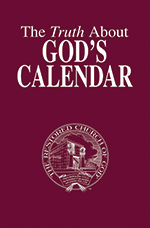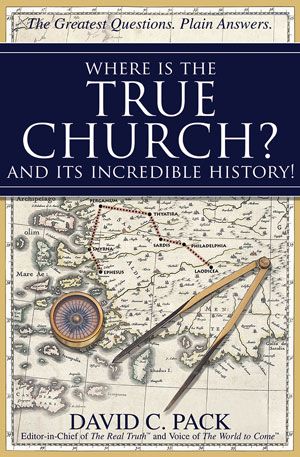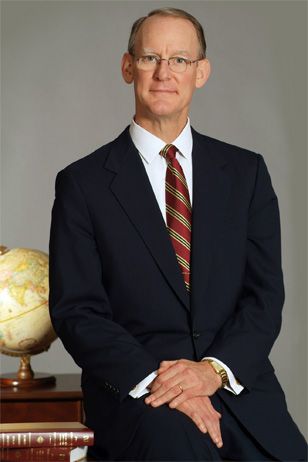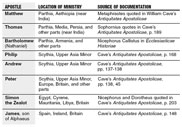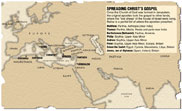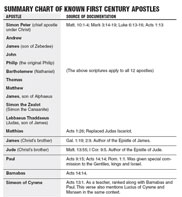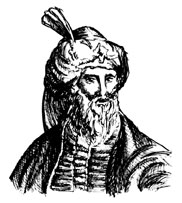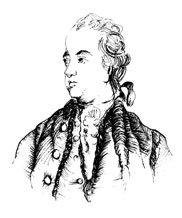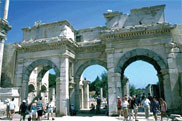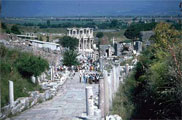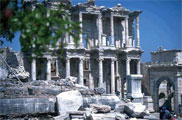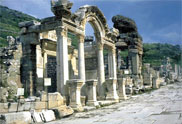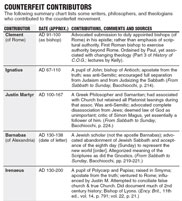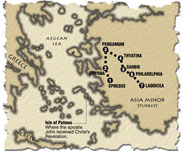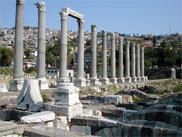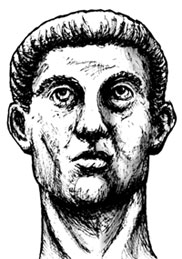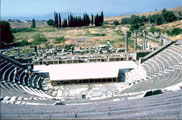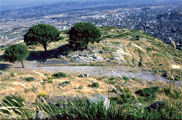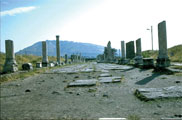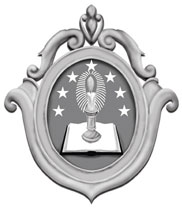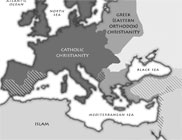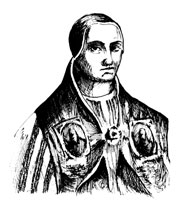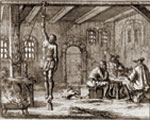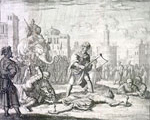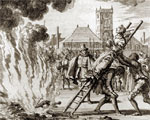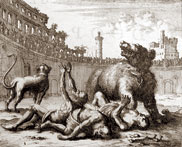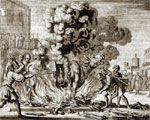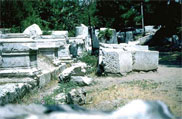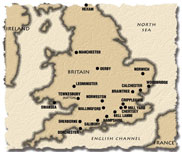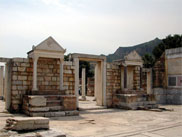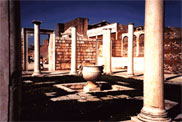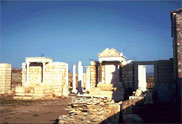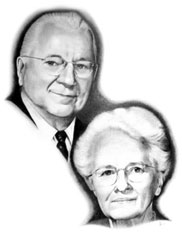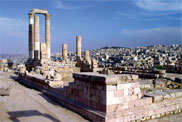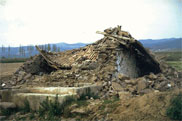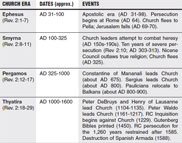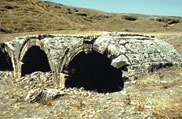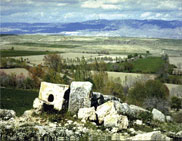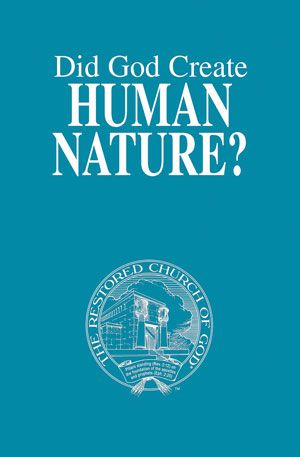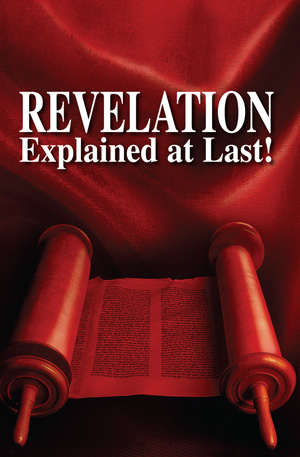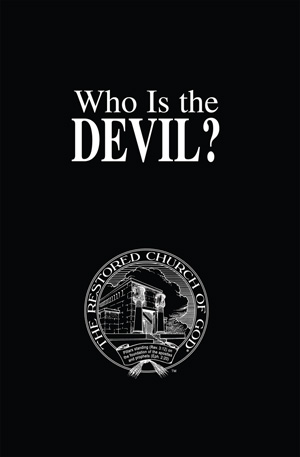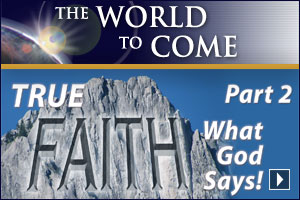Many write us with questions about who and what we are. Most commonly the question is simply: What is The Restored Church of God? It is this Church of which I am Pastor General.
The organization with which you have come in contact is unique in every senseâdifferent from all others on Earth. It is one whose members are dedicated to letting their light shine in a world desperately needing light!
This chapter brings the compelling story of a Church empowered by a deep conviction, derived from understanding that genuinely happy lives can be a reality nowâand that a wonderful world is soon to come to all nations!
Two Stories
In 1979, a newspaper reporter contacted a pastor serving a large congregation in the Northeastern United States, requesting to interview the pastor and attend services. An article was to result from the reporterâs interview and his impression of the services he attended. At that time, the church had suddenly come to national attention, and most were generally unaware of its beliefs.
However, the promised article for the newspaperâs Sunday edition never appeared. Wondering why, the pastor called the reporter, who confessed that he had originally intended to indict the Church as a cult, but no longer had the heart to do so. When asked why, he explained that seeing so many friendly, happy people completely disarmed him, and this caused him to abandon his article.
This Church also held the worldâs largest annual multi-site convention, with over 120 sites spanning the globe. Wherever its members gathered, it made an enormous impression. One example: The Georgia State Patrol assigned to the convention site at Jekyll Island, Georgia, indicated that over 10,000 church members there were much more manageable than a few hundred police officers meeting for a nearby convention.
The cooperation of the attendees and the fact that the Church appointed its own traffic, parking and security officials translated into the Georgia State Patrol needing no additional help. All other conventions (including the law officersâ convention) required substantially more patrolmen, with numerous difficulties for those responsible for maintaining order.
Invariably, reporters around the world noted that these conventions were a delight to host. They enjoyed seeing so many well-mannered families enter local convention centers. âUnpretentious,â âdown-to-earth,â âhappyâ and âsincere people radiating an inner peaceâ were often-used terms describing this Church.
Why is this missing in todayâs world? What did these people know that everyone else does not? Is there more to this than meets the eye?
Universal Desire
All people long for happy, peaceful, abundant lives. But how many today actually enjoy this kind of wonderful life?
Knowledge is exploding! Mankind has produced astonishing materialistic progress. Breakthroughs in science and technology have never been greater. But have they been able to bring a rich, full, joyful life to everyone? Have education and the knowledge explosion brought this? Has religion succeeded in producing peaceful, abundant lives worldwide? Have governments found the answers to mankindâs greatest questions? Are statesmen providing the example leading to the way that produces true happiness?
In every case, the clear answer is NO! Plain answers are lacking.
Vast new frontiers of expanding scientific knowledge have not brought the happiness that leaders and scientists prophesied would accompany it. Neither have laborsaving devices, which were supposed to bring people more leisure time to âenjoy themselves.â Instead, mental illness, loneliness, self-pity and despair, suicide, alcoholism, drug addiction, as well as other forms of escapism, and general discontent with life, abound everywhere.
Immorality and human degeneration have never been worse. The world is filled with problemsâfamine, poverty, civil unrest, disease, pollution, religious confusion, war, terrorism, crime, debt, ignorance and political upheaval. And things continually grow worse.
Marriage is under assault as never before. Adultery is rampantâtraditional home and family life is blurring and in danger of becoming extinct. The vast majority of families are now broken, confused and out of control, with countless children growing up without both parents. Teen-aged pregnancies and sexually transmitted diseases are fast becoming the norm. Parents feel helpless in raising moral children in todayâs immoral world.
Thousands of wars have been fought in the name of religion. Hundreds of millions of lives have been wiped out in the name of peace! Still there is no peace! Humanly-devised solutions always fail to bring lasting peaceâanywhere in the world.
At every turn, mankind has bungled and botched all efforts to solve its biggest problems. As a result, humanity suffers from every conceivable evil and ill. Misery, confusion, unhappiness, discontent, and desperation abound.
But there is a way that produces true happiness and peace. Some have discovered a way of life and are living and following this way that yields joy, contentment, prosperity, true successâand lasting fulfillment.
Yet, this includes only a few. Why? The answer lies in a basic law.
A Great Unseen Law
There are many unseen laws that govern life. For example, everyone understands the law of gravity. If one accidentally drops a brick on his foot, the result could be broken bones. If a skydiver jumps from an airplane, and the parachute fails to open, the result is certain death. This is easy to understand.
Here are some examples of another unseen law that is just as real. If a person is constantly sick, it is obvious that laws of health (proper diet, enough exercise, sufficient sleep, etc.) are being broken. The effect of bad health has one or more causes. If a marriage ends in divorce, it can also be attributed to one or more causes: lack of communication, financial woes, death of a child, sexual problems, unhappiness on the job, etc. If someone is arrested for drunk driving, it is not hard to see the cause of the arrest.
Most never identify âcause and effectâ as a universal law governing almost every action in life. They are unaware that this is a general principle at work in the world.
Every effect can be traced to one or more causes. Unwanted or illegitimate pregnancies, crime, drug addiction, bankruptcy, and a thousand other effects, can all be linked to specific causes.
But why can man not see this law at work when looking either at the world as a whole or at lives individually? Why has religion also ignored this important relationship between cause and effect?
There is a hidden cause for the conditions of the world and its inhabitants.
However, aware of this, there are some, scattered around the world, living joyful, abundant lives. These people stand out, glowing with genuine happiness, having purpose in their lives. But this is not due to luck or chanceâthere is a cause! Most people ignore right causesâand, as a result, reap a host of bad effects.
God-Centered Way of Life
The cause, for both ends of the spectrum, involves oneâs way of life. Those few experiencing happy lives follow Godâs Way. They are members of the Church of God, known today as The Restored Church of God, the successor to the Church described in the middle chapters of the book, and in the beginning of this chapter. Each member is dedicated to living Christianity!
It could be said that there are two different ways of life. One is best described as the âgiveâ wayâthe way of love and outgoing concernâGodâs Way! The other is the opposite or âgetâ wayâthe way of selfishness and self-concernâthe way of this world. For 6,000 years, man has lived his own wayâthe get way.
Most people are interested in enjoying pleasures and accumulating physical things. As has been observed, âLife is about seeing who can die with the most toys.â That may be true of this world, but it is not true of the Christian way.
Christ taught, âIt is more blessed to GIVE than to receiveâ (Acts 20:35). Practicing this way of life leads to the abundance, peace, prosperity, supreme happiness and joy all seek. The Restored Church of God follows the same way that Christ and the original apostles taught.
Godâs spiritual Lawâsummarized in the Ten Commandmentsâcan be separated into two basic categories: (1) Love toward God, as expounded in the first four commandments. Christ summarized them in Matthew 22:37: âYou shall love the Lord your God with all your heart, and with all your soul, and with all your mindâ and (2) love toward fellow man, summarized in the last six commandments: âYou shall love your neighbor as yourselfâ (vs. 39).
Practicingâliving!âGodâs Way is the CAUSE of the happiness of those in this Church. Each member, empowered by the Holy Spirit, is dedicated to living the way of giveâthe God-centered way of life. The Restored Church of God is a united body of people focused on making a difference in the lives of individuals. It is determined to help others, to teach them this same way.
The happiness that true Christians experience is not a shallow, false happiness. It runs deep in the life of each member. Why? Because a God-centered way of life produces this! In fact, the Bible is literally filled with passages about joy and happiness, but few know of them.
Godâthe Creator of all life on Earthâgave mankind a detailed Instruction Manual containing vital information, explaining what we are, why we are, and where we are going. While the manuals and textbooks of institutions of higher learning teach students how to make a living, manâs Maker teaches him how to live, through His Wordâthe Holy Bible. Godâs people are dedicated to following His Word and to living by every principle that derives from it. They live these principles and experience the effectsâhappy marriages and families, productive lives and careers, contentment and fulfillment.
But what about the rest of the world? Again, why is there so much evil today? Why the increasing crime, unrest, rioting, wars and violence? Why is immorality exploding? Why do over half of marriages in todayâs society fail?
Civilization has lostâcompletely ignoredâcrucial information!
Knowledge Was Lost
Humanity has lost the knowledge of Godâs way of life and how to live it. Man does not know why he is, what he is and where he is going. Society has lost the understanding that brings happiness, joy and prosperity. It does not know the way to peace (Rom. 3:17; Isa. 59:8).
Why is this?
As simple as this may sound, the cause of all the worldâs troubles began in the Garden of Eden. God had first created all things and had taught Adam what is right and wrongâbut Adam insisted on deciding right and wrong for himself. Humanity has followed Adamâs decisionâand wayâand been miserable ever since!
The world has lost sight of a decision made by Adam and Eve. They chose not to eat of the Tree of Life, which God had told them they could freely do, choosing instead to eat of the tree of the knowledge of good and evil, referenced earlier. Again, mankind ever after has followed in their footstepsâthe way of get.
This explains a modern world filled with troubles, evils and ills! The knowledge and understanding of Godâs Way became lost.
From Creation, until the First Coming of Jesus Christ, only a few followed Godâs instructions regarding right and wrong. Adamâs son Abel chose the right way of life. Several generations later, Enoch walked with God. His great-grandson Noah was the only person of his day who followed God. His son Shem followed in his footsteps. Soon after the flood, there was Abraham, the father of the faithful. Following him were Isaac, Jacob and Joseph.
In the time of Moses, God raised up His nation, Israel. He made a covenant with the Israelites, yet they rebelled soon after. While God attempted to have the Israelites follow His Way, they rejected Him. At the same time, the rest of the world continued in the original way that Adam and Eve chose.
This was the world before Christâone in which only a tiny few walked with God. Almost all had rebelled, and the knowledge of Godâs Way was lost to the vast majority. This was a world needing a Savior to reconcile it to its Creator. It was during this period that many prophets brought the good news of a Messiah soon to come with a message for all nations.
The Messenger and His Announcement
Jesus came not to save the world and rule as King then, but rather as a Messengerâa newscasterâwith an announcement. His message was the gospelâmeaning, good newsâof the coming Kingdom of God.
In order to announce the Kingdom of God, Christ had to first overcome Satan, the god of this world. This would qualify Him to replace Satan and become King of Godâs soon-coming Kingdom.
He also came to reconcile mankind to the Father. From the moment Adam and Eve rejected God, humanity has been cut off from God (Isa. 59:1-2)âand from the knowledge of the give way, which produces the good things in life. Being perfect, Christ gave His life for humanity. By His sacrificeâHis deathâHe paid the penalty for the sins of all.
The Kingdom that Christ announced is the world government of Almighty God, soon to come, which will rule all nations and bring everlasting peace and prosperity. This gospel message included the fact that, upon repentance and faith, people could become Godâs begotten children. Then, after a lifetime of overcoming, growing and giving, these begotten children would one day be born again, entering Godâs Kingdom, at the Resurrection.
Birth of the Church and Godâs Work
Jesus understood and taught His disciples that of Himself He could do nothing (John 5:30). The Spirit of God enabled Him to accomplish all that He did. Prior to His ascension to heaven, Christ told His disciples He would send them Godâs Spirit.
This event, the beginning of the Church of God, occurred in AD 31. Jesus described the significance of what happened: âBut you shall receive power, after that the Holy Spirit is come upon you: and you shall be witnesses unto Me both in Jerusalem, and in all Judea, and in Samaria, and unto the uttermost part of the earthâ (Acts 1:8). God then gave His Holy Spirit to 120 disciples, quickly followed by 3,000 more raised up to support the work of the twelve apostles.
The Work of God also began at this same time. Delivering to the world (in this age to all nations) the gospelâthe good news of the coming Kingdomâthe true gospel!âhas always been the Work of God! Infused with the Holy Spirit, Godâs people were now empowered to fulfill His mission.
When Jesus stated, âI will build My Churchâ it went far beyond just beginning, increasing and caring for it. There is a marvelous transcendent purpose for the Church Christ built!
Godâs WorkâThe Mission
Christâs Church has a mission. Every member is called to become a part of the exciting Work of God.
This missionâthis Work of loveâhas a two-fold commission. The First Commission is âGo you into all the world, and preach the gospel to every creatureâ (Mark 16:15). The Second Commission is to feed the flock of Godâto supply each member of Godâs Church with spiritual food (John 21:15-17). As Godâs members are fed, they grow spiritually, allowing them to serve and dedicate themselves more to the First or Great Commission.
Fulfilling the First Commission is far more complex today than in the age in which the original apostles lived. However, teaching in the information age is also more exciting. Vast amounts of knowledge travel at incomprehensible speed. Within all this information is the refreshing knowledge of Godâs way of life. The Restored Church of God is spreading the gospel at a rate and efficiency that the Church has never before seen. Great numbers of people can now learn as much as they wish, when they wishâand as fast or often as they choose. Many millions around the world are learning sound, proven principles, straight from their Bibles, helping them to live happier lives and become better citizens.
The Restored Church of God is a fountain of true knowledge in a parched world grappling with ever-increasing evils!
The First Century Work Falters
Under the original apostlesâ leadership, the initial growth of the Church was dramatic. But almost immediately after the first generation of the Church, we saw that the Work began to falter. It lost momentum due to Roman persecution and, as we saw, pressures from the rise of a different church.
Throughout the Middle Ages, the Work ebbed and its warning to the world grew faint. But it never died. Christ promised that His Church would never disappear, and therefore neither would its Work! By the early twentieth century, as the vitality of the Church and Work was waning, a new era arrived. The time had come for Godâs end-time message to go around the world.
A New EraâA New Life
We learned that, in the fall of 1926, God called and soon began to use a man named Herbert W. Armstrong (1892-1986). He led the Church of God for 52 years, beginning in late 1933, when he established the Radio Church of God (later named the Worldwide Church of God).
With the arrival of the twentieth century, the time had come for Christâs message to go to the entire world. Under Mr. Armstrongâs extraordinary leadership, a new era emerged, resembling the first century Church. It was an era that had vitality, experienced tremendous growth throughout the world, and focused on living and sharing the way of give. Empowered by Godâs Holy Spirit, the living Jesus Christ was its active Head. Over time, God restored to the Church all the teachings that had been lost through the centuries. With these teachings was the all-important centerpieceâthe true gospel message.
This message, suppressed for centuries, was now revived!
With the passing of time, the Work of God exploded beyond imagination. Doors opened before the Church as it diligently strove to spread Christâs gospel message.
The Worldwide Church of God averaged 30% growth each year for the first 35 years after 1934â1935 through 1969. This allowed Godâs message to boom forth all over the world.
In 1934, The World Tomorrow broadcast went on the air for the first time. Starting very small, on only a single 100-watt radio station, the program eventually grew to 400 radio and television stations, with an estimated 250 million listeners!
The Plain Truthâa free magazine of understandingâwas published for the first time in February 1934. This magazine dealt with world issues, family values, health and proper education. Again, this also started small, with only 250 copies printed. Yet, Christâs voice was behind the message of The Plain Truth and we saw the magazine grew to a subscription of 8.27 million worldwide, with an estimated 25 million readers.
In 1947, the Church founded a college. This was needed to provide Godâs ever-expanding Work with an educated ministry. In time, the Church had established three colleges, focused on making a difference in the lives of their studentsâteaching them how to live, not just how to earn a living.
Booklets about Godâs laws, His Master Plan, the true gospel, the Sabbath, the Holy Days, dating, marriage, smoking, drugs, managing personal finances, the laws of success, true conversion and so many others were given freely to a great many people. Readers were taught how to live!
As the Worldwide Church of God expanded, many lives were touched. Vast millions read and heard the truth of Godâs way of life. They began to understand that there is another wayâa life of giving, and understanding spiritual cause and effectâa God-centered path through the maze of confusion and unhappiness of todayâs world. Many outside the Church experienced the benefits of this wonderful education.
Yet, just as the Work faltered a generation after the first-century Church began, it also faltered after the death of Mr. Armstrong.
Recent Church History
In a truly historic move, and creating one of the great (albeit tragic) stories in religion of the twentieth century, the leaders who succeeded Mr. Armstrong eventually changed all of his teachings. As time passed, it became clear that the Worldwide Church of God was no longer growing, but rather shrinking. The magnitude and influence of Godâs clear, powerful message faded, and was eventually lost altogether.
This caused several groups to separate from that church. But it must be underscored that all groups that left had accepted some of the doctrinal changes taught by the new Worldwide Church of God leadership.
Those who realized the need to hold to the complete, original teachings, to fully follow Godâs Law of Love (I John 5:3; Rom. 13:10), saw that every organization had accepted some changes. Desiring to keep intact the entire formula, which, again, yields such wonderful peace, happiness and abundance, The Restored Church of God was formed. Those holding to the full truth continued to be led by Christ, allowing them to successfully carry on the magnificent, enriching Work of God.
Pastor General of the Church, David C. Pack, ordained in the Worldwide Church of God, and serving in the ministry since 1971, came to realize that no leader or organization was upholding all the original doctrines taught by Mr. Armstrong. Having been personally trained by Mr. Armstrong, Mr. Pack understood the need to continue the mission as he had been taught and to reach the entire world with the same gospel message. Under his leadership, The Restored Church of God was born.
Recapturing True Doctrines
Though all of the many biblical truths were thought to have disappeared in the smoke and haze of the turbulent apostasy and aftermath, each one has been carefully restored to its original state, in The Restored Church of God. Mr. Armstrong personified the Philadelphian Era and the Work with The World Tomorrow broadcast, The Plain Truth magazine and many other books, booklets and articles.
Likewise, in this most turbulent and perilous of times, Christ selected an individual, especially prepared for the job of helping to gather the Philadelphian remnant, feeding and defending that collective flock, taking the gospel to all nations and continuing the special warning to the modern nations descended from ancient Israel. He is also commissioned to warn those of Laodicea (Rev. 3:14) of what lies ahead for them if they do not âanoint their eyesâ to recover from spiritual blindness (vs. 18). And, just as Mr. Armstrong personified the Work in the previous era, so The Restored Church of God reflects the Philadelphian Work in this final era because nothing less than a relentless energy and drive, that characterized Mr. Armstrong, could possibly complete the job that looms ahead.
New Leadership
By way of very brief background, The Restored Church of God leader, David C. Pack, was called into the truth in the middle of 1966. He was sent into the full-time ministry in 1971 and has directly served or pastored many thousands of brethren over these decades. For over fifteen straight years, Mr. Pack was sent to numerous troubled Church areas to reestablish order where the previous pastor had resigned, or had been suspended or terminated.
After various opportunities to gain additional experience by developing certain projects, while serving as a field pastor, he later served on the Council of Elders and as a Regional Pastor in one of the large splinter organizations that had formed early in the apostasy.
As Mr. and Mrs. Armstrong had worked together as a team, such was also the case in the early years with Mr. and Mrs. Pack. Mr. Packâs wife (who died in 2007), the former Shirley Ochs, was Mr. Armstrongâs secretary beginning in the early 1960s. She served while a student at Ambassador College and, later, full-time in that capacity. It was through these circumstances that Mr. Pack became close to Mr. Armstrong for about fifteen years, from 1971 when he married, until Mr. Armstrongâs death in 1986.
Although assigned to the field ministry rather than Headquarters, he had the opportunity to confer with Mr. Armstrong on an individual basis, more often than some who worked around him at Headquarters. He had an opportunity to spend countless hours discussing with Mr. Armstrong a wide range of matters, decisions and certain crises that the Church was undergoing at various times. This period of instruction and learning, often focusing on the fulfillment of prophecies now just ahead, proved especially valuable to him in ways that he could not appreciate until recent years.
While serving in the ministry, circumstances required that Mr. Pack fulfill an inherited obligation to serve as owner and President of his fatherâs North Carolina corporation for about five years. This background provided the experience and understanding necessary to better coordinate the final thrust of Godâs Work. As secretary for Mr. Armstrong, his wife had also acquired firsthand experiences in the many aspects of a worldwide Work.
As accounts were related about Mr. Armstrongâs dealings with the Sardis ministry, so a number of accounts could be given, detailing Mr. Packâs uncompromising stance against heresy at any level. He constantly confronted his superiors, calling their hand time and again as they deviated from the true doctrines of the Church of God. He was fired twice for preaching the truth, the second time while other senior ministers were permitted to continue unchecked, spreading new false doctrines and ideas within the splinters that had emerged from the WCG. (Again, Mr. Packâs extensive biography offers complete detail of the thumbnail presented here.)
May 1999
The Restored Church of God was formed in May of 1999, in the midst of ongoing upheaval in the wake of the apostasy. This resulted from Mr. Packâs unrelenting stand against compromise within the splinters, which put some of the leaders on the spot with their new or compromised teachings. The best solution in the eyes of these leaders was the easy path of âshooting the messenger,â rather than confronting their âold guardâ ministers.
You will recall that circumstances in 1933 freed Mr. Armstrong from the compromising restraints of Sardis ministers. Similarly, 66 years later, Mr. Pack was forced to establish The Restored Church of God to be free from the restraints of those who were not totally committed to holding to all the truth!
As Restored was getting underway, an effective tool was capitalized upon firstâsermon audiotapes were prepared for distribution around the world. These sermons covered topics that helped accelerate the progress of those reawakening to lost understanding. Prepared from mid-1993 through 1994, the series of three sermons on the â30 Reasons to Follow the Truth,â including another sermon entitled âTruth,â had been clear and strong for Godâs doctrines. It was this last sermon that brought Mr. Packâs immediate termination from the Worldwide Church of God in early 1993.
These sermons, more than any others, circulated among many thousands of the approximately 35,000 who survived the apostasy and did help thousands leave the apostates. Additional sermon series, such as âThe One True Church Doctrine (four parts),â âThe Towering Government Doctrine (six parts),â âthe Body of Christ (two parts),â and many others, were also very helpful. These sermons recapture precious truths that Christâs apostle, in the Philadelphian Era, always taught.
Mr. Packâs thorough book, There Came a Falling Away, documented, as no other source, the extent to which the apostates abandoned the truth, and the silly, shallow doctrines they offered in its place. A companion book titled, Except the Lord Build the House, also documented, along with several other books, other elements of Mr. Armstrongâs teachings. Among Mr. Packâs other literature, more books were written that have been helpful in warning of different dangers existing at the end of the age in the wake of the apostasy.
These books have also chronicled the tremendous persecution that Godâs Church and servants have had to endure through the ages, in every eraâoften at the hands of those once thought to be âbrethren.â Taking an unpopular stand, one that goes against the majority, in âdefense of the gospelâ (Phil. 1:17), has brought unrelenting persecution against both The Restored Church of God and Mr. Pack. Like so many others who have gone before him throughout history, he has been persecuted, misrepresented and, literally, put on trial before his peers, over and over again! But, through experience as a troubleshooter in several pastorates, he developed perseverance.
Therefore, as the apostle Paul went on to say, we are âin nothing terrified by our adversariesâ (vs. 28).
Brief History of The Restored Church of God
This reorganization of the Church of God began not as an offshoot of the Worldwide Church of God, but rather as the continuation of the Church as originally foundedâcarrying on the original apostlesâ ministry and teachings. The Restored Church of God started on the basic premise of the need to teach the good newsâthe gospelâof the soon-coming Kingdom of Almighty God. Our beliefs are the same faith that was âonce delivered unto the saints.â Christ never changes (Heb. 13:8), nor do the teachings of His Church!
The first several years of The Restored Church of Godâs existence were primarily preparatory to the continuation of the Work that Mr. Armstrong had started. While never neglecting to feed the flock, all the tools that the Church once usedâfree books and booklets, Bible lessons, articles, short-answer Q&As, magazines and broadcasts, with distribution programsâwere put into place.
An enormous inventory of literature was produced at a staggering speed for such a young organization. Although the courts banned the reproduction of Mr. Armstrongâs literature, the Work has not slowed down. Plans to rewrite all of the booklets, until all of the truth would once again be in place, were implemented. This goal was quickly realized, as booklets and articles appearedâunlike anything that the Church of God has ever seen!âon all the doctrines necessary to bring new members into the truth, and the Church, and to provide the doctrinal foundation to solidify them in the faith.
This Church had to remain devoted to Godâs way of life and dedicated to the First Commissionâreaching the world with Christâs gospelâteaching the right way, much different from the worldâs selfish, grasping get way.
The Work of God in the 21st CenturyâContinuing Until the Age Ends!
Like the first-century Church, this organization has neither millions of members nor any political or religious power or clout.
Yet, we understand the need to spread Godâs messageâto reach out to a struggling, suffering world. While the legacy began with the original apostles, the Worldwide Church of God followed in their footsteps, and The Restored Church of God continues this today. We often refer to the picture presented to the Church from the time of Mr. Armstrongâs leadership as âThe Grand Pattern.â The message and goal are the sameâonly the methods may differ.
Mr. Armstrong utilized the technological innovation of radio (coupled with the printed word), and later television, at the optimum time to carry the gospel to the world. To a lesser extent, certain early Sardis ministers utilized the printing press to spread the gospel. Add to this equation the new technological invention of computers coupled with the Internet. Alongside the worldwide distribution program of our flagship magazine The Real Truthâ˘, extensive Internet and some newspaper advertisingâas we rapidly approach the most crucial juncture in historyâtechnology opened the potential for The Restored Church of God, as sole custodians of the full truth, to do a significant Work. Following in Mr. Armstrongâs footsteps (as his successor should have done) and also holding the office of apostle, Mr. Pack is leading Godâs people back into the whole truthâhe is leading the organization being used to complete the Work that Mr. Armstrong began.
While Godâs faithful servants of ages past had few or no tools to help deceived and confused brethren of their time, who were dealing with false teachers and outright apostasy, this is not the case today. The Restored Church of God is reaching out around the world with powerful capability. The Philadelphian Work and faithful remnant, being gathered together at this time, just before this age ends, is still alive and well!
Rcg.org: The Restored Church of God has the largest biblically-based website on Earth, carrying a vast and ever-expanding array of published tools to guide people seeking to live Godâs way of life.
The power of the Internet is astonishing, allowing us to now reach every country and territory of the world, with none left to reach, except in greater force and impact. The potential number of people we canâand willâreach is truly staggering. This has been of great encouragement to those who support this Work.
The World to Come⢠Program: Broadcast via the Internet, this program answers questions such as: Where is the world going? Why is it filled with problems, troubles, evils and ills, causing unhappiness and misery of every kind? What lies ahead? In an age of fear, confusion and hopelessness, The World to Come is a voice of truth, providing answers, and proclaiming hope for humanity!
In 1934, when The World Tomorrow program was first broadcast, it could only begin on a single small station. Today, The World to Come (in high definition video) is instantly available around the world!
The Real Truth⢠Magazine: We also publish a magazine that continues the message of The Plain Truth. The Real Truth magazine carries articles explaining the cause of war, whatâs wrong with the weather, can science eradicate pollution, the meaning of events in Europe, why earthquakes are increasing, the complete failure of science to bring the utopian world that all long for, how racial bigotry will eventually disappear, where the world economy is going, what lies ahead for the nations of the world, the value of right ethicsâand the definition of true character, the real cause of the moral crisis in the West, whatâs wrong with modern education and academia, why so many seek escape and pleasure, and the understanding of true success.
The magazine explains the worldâs lack of great leaders and what will replace todayâs governments, and how peace will come in our time, how to build strong familiesârearing happy productive childrenâhow to end your financial worries, why new diseases are appearing and older ones are re-appearingâworse than beforeâand whether the United Nations is really mankindâs ultimate answer.
The Real Truth also explains why there are thousands of differingâand disagreeingâforms of Christianity, why religion has not solved the worldâs great problems, how to understand real faith, how to identify the real Christ of the Bible, the way of âgiveâ vs. âget,â the law of cause and effect, the origin of human nature, principles of healthful living, and a great many other subjects.
This magazine brings plain understanding of the insoluble problems now overwhelming mankind, and points to the lasting peace of the world to come, just over the horizon.
Much More
There have been many other advancements in the Church and Work of God, and all of them continue progressing at rapid speed.
Headquarters Campus: The Church is developingâand this has been ongoingâa very carefully planned campus to house its new world Headquarters building. Sufficient acreage is available for additional buildings, all set in a beautiful environment befitting the God of quality.
Training Center: The campus will eventually be designed similarly to a small collegeâbut is already a multi-faceted training center that opened in the fall of 2008. The Church has a neverending need for more faithful ministers, and they are being prepared to serve Godâs flock around the world on a full-time basis. The training center is vital in this regard because this is the most difficult time in the history of the Church of God to protect and feed Godâs people. Very specialized training is required before this can be done properly.
Youth Services: No church (of any kind) anywhere in the world does more for its youth than does The Restored Church of God. We have extensive Bible lesson courses for children of all ages, plus seven volumes of Bible story books, as well as what is simply the finest magazine for teenagers in existence. There is also an extensive Bible study course available for teenagers. All of this is on top of a multitude of books and booklets available regarding marriage, the family and child-rearing.
In addition, the Church has an annual summer camp of the very highest quality as another of the many programs for its youth that it has brought back to life. This camp lays the groundwork of training for young people so that they can be better ready to enter its training center should God wish to use them either in support functions at Headquarters or in the field ministry.
With all of these tools and programs, and more, The Restored Church of God is helping people now drowning in a sea of problems. Many are finding answers, and they are learning to make their lives happy and productive.
How Is It All Supported?
The Restored Church of God never solicits the general public for financial support.
We are dedicated to this mission of loveâof outgoing concern for all people worldwide. All of our activities are supported by dedicated, giving people. Following Christâs instruction, âFreely you have received, freely give,â we offer everything free of charge. Unlike most other religious organizations, there is nothing to buy or pay for. With the exception, as did Mr. Armstrong, of books made available in bookstores for an audience that could find them no other way, it is all free of charge.
The Restored Church of God receives financial support from the voluntary tithes paid by its members. Godâs people recognize the abundant blessings promised by God to all who obey His law of tithing. One side benefit of practicing just this single extraordinary law is that it helps people more carefully manage their personal finances. In the end, both the Church and its people prosper from practicing this proven law from Godâs Word. (There are others who contribute regularly as co-workers and donors; these also wish to share with others what they have received.)
Where Do We Fit in the World?
Christ did not come pleading with the masses to become converted or to âgive their hearts to the Lord,â but rather with the announcement described earlier. He taught a way of life that the world had long before rejected and forgotten. He did not come to save the world of His day. He came to announce a future time when the world would be saved. We follow His example.
Christâs example, and that of the apostles, shows that Christians do not proselytize. The Restored Church of God also follows this principle. We are not trying to convert or fix this world, but rather continuing Christâs announcement message. The Restored Church of God explains what is wrong with this world without preaching âatâ people or condemning them. We offer hope, showing how mankindâs worst problems and woes will be solved. We bring urgency and vitality to the topics on peopleâs minds todayâexplaining the reason for the explosion of problems around the globe. Again, we teach âcause and effect,â not band-aids masking the problems.
Many are amazed that the problems and challenges they have in their livesâsome seemingly unsolvableâcan be solved by following Godâs Way. By putting God first in everything, lives can be straightened out and become fulfilling.
The Restored Church of God offers no political opinions. Again, it does not involve itself with any political movement or agenda. Rather, it teaches loveâoutgoing concernâfor all peoples of the world.
While the Christianâs first priority is always to the government and instruction of God, the Bible teaches the need to properly submit to the governments of men, until they are replaced by Christâs rule with the saints over all nations. Godâs Church strongly adheres to this teaching in every sense.
Astonishing Growth
The original apostles were a tiny group who eventually had a profound impact on the world of their time. The Worldwide Church of God also started small and, within half a century, had enormous impact on the nations of the world. Called an Ambassador for World Peace, Herbert W. Armstrong eventually went on to personally visit one-third of the heads of stateâkings, queens, presidents and prime ministersâof his time.
While also beginning small, and still not large by menâs standards, The Restored Church of God is also experiencing rapid growth and constantly increasing impactâwith real power!âaround the world. And with the same pattern of growth that the Worldwide Church of God experienced, time has already demonstrated that the Church will continue to grow and to continually reach farther, helping more people with vital spiritual knowledge, and affecting positive change in the lives of ever greater numbers.
Jesus commanded His disciples to go forth into the entire world. We are doing exactly that! Bringing the message of Godâs way of life even to far-flung countries like Zimbabwe, Iceland, China, Chile, New Zealand, Egypt, India and all over Europe. This commission has not stoppedâand we are now consistently reaching all nations and territories on Earth!
Many thousands (the number is constantly increasing) visit our website daily. People are being taught sound, true principles of a productive way of life. They are now armed with knowledge that can help them grow to become better examplesâand better citizensâin their local communities.
The Restored Church of God is offering hope to a dying world.
Impact and Change
The original apostles strove to make a difference. The Worldwide Church of God made a difference in millions of lives. The Restored Church of God is fired with that same driveâthat same determinationâto set a positive example and thereby have a positive impact on the world. It is also making a real difference.
Vast multitudes were exposed to the sound teachings of the Church of God under Herbert W. Armstrong. This same message continues todayâand the fruits of the Work of God are evident!
Almost no one understands what Christianity really is. Most have no idea that it can bring them supreme happiness, beyond imagination. They have no concept that it represents fullness, richness, pleasures and overflowing with plenty, both physically and spiritually.
Jesus said, âI am come that they might have life, and that they might have it more abundantlyâ (John 10:10).
The excitement, joy, thrill and enormous contentment that flow from true understanding dwarfs every trial, difficulty, hurdle, obstacle and problem one could face. Truly grasping this leads to why Jesus said that His way represents a life more wonderfulâmore abundantâthan most could dream possible!
Many are experiencing lives filled with zeal, vigor, enthusiasm and driveâand led by hope and faithâas though final success depends on their conduct every day.
Lives are changingâpeople are being affected in positive ways. They are learning how to raise children in a world that has lost such basic knowledge. They are also learning of laws that produce real, lasting success. The power of Godâs Spirit is replacing discouragement with energy and hope. It is bringing zeal to accomplish, and removing confusion and indifference. It is taking shattered dreams and shriveled feelings, and expanding them to marvelous new horizonsâand inspiring an expectation of success. It is taking stress and turning it into productivity and fulfilling accomplishment.
This Church is bringing people the most precious knowledge they could ever hope to receiveâthe knowledge of why they were bornâthat they were put on Earth to build holy, righteous, perfect character.
These are just a small number of the fruits growing in the lives of people striving to live by every word of God (Matt. 4:4; Luke 4:4).
Members of The Restored Church of God are dedicated to letting their light shine in a âmodernâ world that so desperately needs light! In a world yearning for peace, whose inhabitants dream of a prosperous life, we offer hope to all who listenâa deep inner confidence, derived from understanding that genuinely radiant, happy lives can be a reality, and that a wonderful world is soon to come.
A colossal question loomsâŚ

